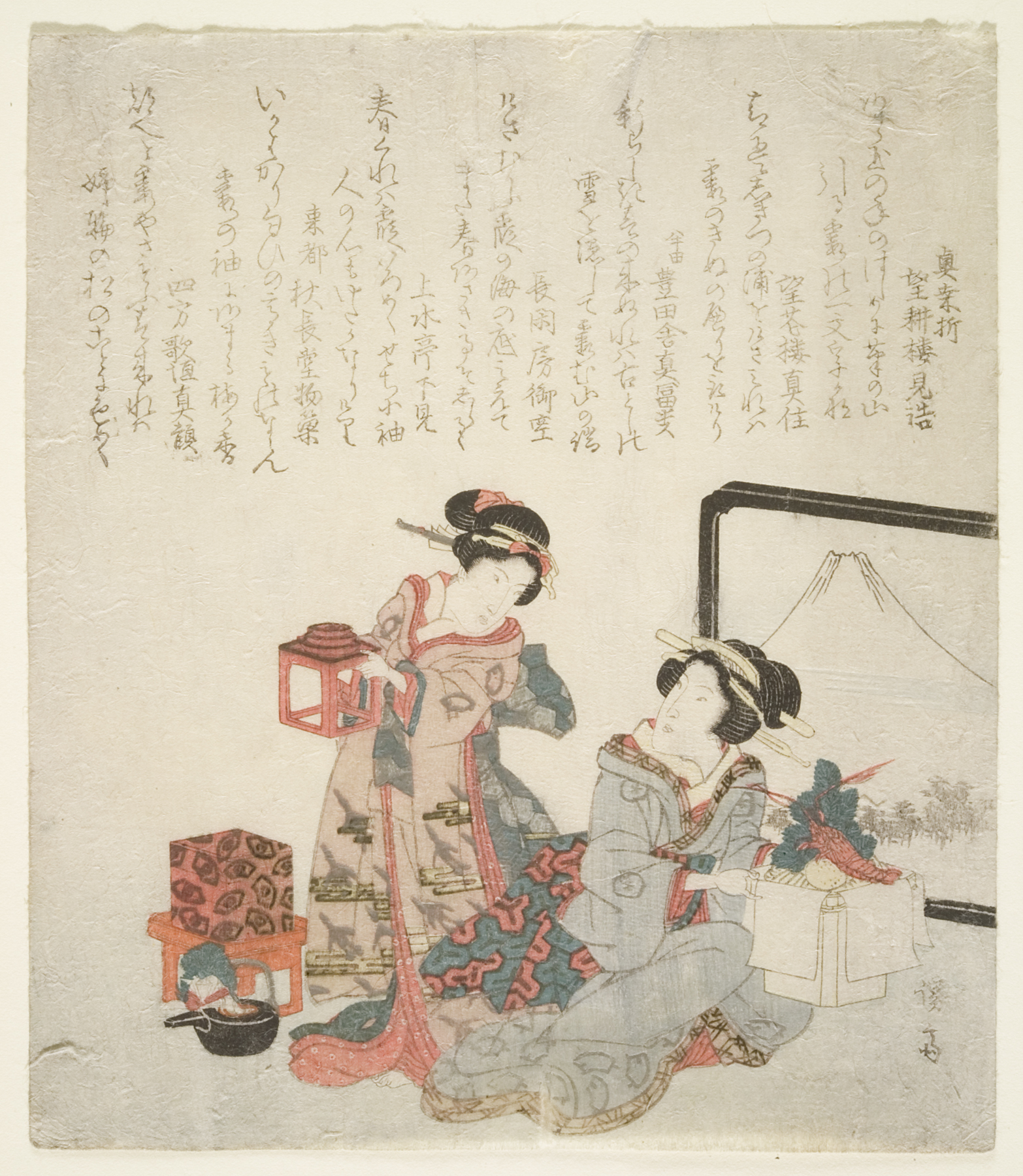women preparing ornaments for New Year, Keisai Eisen
Artwork Overview
Keisai Eisen, artist
1790–1848
women preparing ornaments for New Year,
mid 1820s, Edo period (1600–1868)
Where object was made: Japan
Material/technique: color woodcut
Dimensions:
Image Dimensions Height/Width (Height x Width): 208 x 180 mm
Image Dimensions Height/Width (Height x Width): 81 7/8 x 70 7/8 in
Mat Dimensions (Height x Width): 19 x 14 in
Image Dimensions Height/Width (Height x Width): 208 x 180 mm
Image Dimensions Height/Width (Height x Width): 81 7/8 x 70 7/8 in
Mat Dimensions (Height x Width): 19 x 14 in
Credit line: William Bridges Thayer Memorial
Accession number: 1928.7833
Not on display
If you wish to reproduce this image, please submit an image request


